Quando falamos de duplas dinâmicas do
cinema, em geral nos referimos a uma dupla de director e intérprete (ator ou
atriz) – como William Wyler e Bette Davis, por exemplo – mas raramente focamos
em colaborações entre diretores e roteiristas. Na verdade, algumas parcerias
firmadas por trás das câmeras mudaram o cinema para sempre.
When we talk about dynamic duos of the silver
screen, we often talk only about director and actor/actress duo – like William
Wyler and Bette Davis, for instance – but we rarely focus on director /
screenwriter collaborations. Actually, some partnerships made behind the
cameras have changed cinema forever.
Frank Capra e Robert Riskin se
conheceram em 1931 e trabalharam juntos por uma década. Frank e “Bob” eram
parceiros e amigos, em uma relação simbiótica que nem sempre foi pacífica. De
fato, muitos dos temas que consideramos como parte do “toque de Capra” só
estiveram presentes em seus filmes porque primeiro Riskin os inseriu no
roteiro.
Frank Capra and Robert Riskin met in 1931 and
worked together for a decade. Frank and “Bob” were partners and pals, in a
symbiotic relationship that was not always peaceful. Indeed, many of the themes
that we consider being part of the “Capra touch” were only present in his films
because Riskin first wrote them in the screenplay.
Em sua autobiografia, “The Name Above
the Title”, Capra escreveu isso sobre Riskin:
In his autobiography, “The Name Above the Title”,
Capra wrote about Riskin:
“Se o acaso sorri, um escritor pode
se juntar com um homem que faz seus próprios filmes. Se a parceria é simbiótica
e bem-sucedida, a experiência pode ser muito
recompensadora: artisticamente, economicamente e como um bônus para o ego.
Assim foi minha longa parceria com Robert Riskin. Foi preciso uma guerra para
nos separar. Bob era um bom escritor, um cara simpático. Elegante, espirituoso
como poucos, ele amava a vida, esportes e mulheres – e vice-versa. Nós tínhamos
muitas coisas em comum, mas duas eram especiais: (1) nossos crânios vibravam
com a massagem da mesma cabeleireira (nós gastamos fortunas em remédios para
curar a calvície – e fizemos uma descoberta estarrecedora: carecas não têm
caspa) e (2) nosso senso de humor vibrava no mesmo tom.
Nós trabalhamos juntos em roteiros, construindo
a partir das ideias um do outro. Éramos ambos criadores e público. Eu ficava um
passo à frente dele, pensando nas próximas cenas que, quando chegássemos a um
consenso, ele colocaria no formato de roteiro. E nunca houve melhor ‘orelha’
para a palavra falada que a de Riskin.”
 |
| Robert Riskin, May Robson, Frank Capra |
“If
serendipity smiles, a writer may team up with a man who makes his own films. If
the team-up is symbiotic and successful, the
experience can be very rewarding:
artistically, economically, and as a lagniappe for the ego. Such was my long
team-up with Robert Riskin. It took a war to break us up. Bob was a fine
writer, a simpatico man. Natty, witty as they come, he loved life, sports and
women – and vice versa. We had many things in common, but two stood out: (1)
our skulls vibrated to the same hair-lady’s massage (we spent fortunes on
nostrums to cure baldness – and made a startling discovery: cueballs have no
dandruff), and (2) our funnybones vibrated to the same tuning fork in humor.
We worked together on scripts, sparking and
building on each other’s ideas. We were both creators and audiences. I stayed ahead
of him, thinking up the next batch of scenes which, when agreed upon, he would
put into dialogue script form. And never was there a better ‘ear’ for the
spoken word than Riskin’s.”
A primeira colaboração deles não foi
realmente uma colaboração. Digo isso porque o filme “A Mulher Miraculosa”
(1931), foi baseado em uma história escrita por Riskin, sob o título “Bless You
Sister”, mas Riskin não esteve envolvido na adaptação para o cinema. Este foi o
único fracasso de bilheteria no tempo em que Capra trabalhou para a Columbia,
muito embora o filme sobre charlatanismo religioso com Barbara Stanwyck seja
excelente.
Their first collaboration wasn’t really a
collaboration. I say that because the film “The Miracle Woman” (1931) was based
in a story written by Riskin, called “Bless You Sister”, but Riskin had nothing
to do with the adaptation to the screen. It was the only box office flop in
Capra’s Columbia period, even though it was an outstanding film about religious
charlatanism starring Barbara Stanwyck.
A primeira colaboração real foi “Loura
e Sedutora” (1931), baseado em uma história escrita por Riskin, que também
escreveu os diálogos para o filme. A comédia conta com Loretta Young, Jean
Harlow e Robert Williams. O filme foi um sucesso.
Their first real collaboration was “Platinum Blonde”
(1931), based on a story written by Riskin, who also wrote the dialogue for the
film. The comedy stars Loretta Young, Jean Harlow and Robert Williams. The film
was a success.
Em seguida veio “Loucura Americana”
(1932), uma ideia original Riskin-Capra. O filme, estrelado por Walter Huston,
lidava com a Grande Depressão, ainda em curso.
Next up comes “American Madness” (1932), an
original Riskin-Capra idea. The film, starring Walter Huston, dealt with the
ongoing Depression.
Os anos dourados da parceria começam
com “Dama por um Dia” (1933). A história de Apple Annie foi indicada a quatro
Oscars – e Capra esperava ganhar todos os quatro, como ele confessa na
autobiografia. Com os discursos prontos, ele protagonizou um dos mais
vergonhosos momentos do Oscar: quando o apresentador Will Rogers anunciou o
prêmio de Melhor Diretor com um “Venha buscar, Frank!”, Capra levantou-se e
estava chegando ao palco quando percebeu que era Frank Lloyd que era o
vencedor.
Then, the golden years of the collaboration begin
with “Lady for a Day” (1933). The story of Apple Annie was nominated for fours
Oscars – and Capra expected to win all four, as he confesses in his
autobiography. With his speeches ready, he was the center of one of the most
embarrassing Oscar moments ever: when presenter Will Rogers announced the Best
Director award with a “Come and get it, Frank!”, Capra went almost all the way
to the stage, only to realize that it was Frank Lloyd who had won.
Felizmente, o filme seguinte de
Capra, “Aconteceu Naquela Noite” (1934), ganhou não só quatro, mas sim cinco
Oscars, incluindo de Melhor Roteiro Adaptado para Riskin. Com Clark Gable e
Claudette Colbert, o filme conta a história de uma herdeira em fuga e de um
repórter que a segue em busca de um furo de reportagem.
Fortunately, Capra’s next film, “It Happened One
Night” (1934), won not four, but five Oscars, including one for Best Writing,
Adaptation for Riskin. Starring Clark Gable and Claudette Colbert, the film
tells the story of a runaway heiress and the reporter who follows her to get a
scoop.
Também de 1934 é “A Vitória Será Tua”,
um filme sobre corridas de cavalos com Myrna Loy e Warner Baxter. Eu ainda não
vi este filme, mas vi o remake fofo dele, também dirigido por Capra: “Nada Além
de um Desejo” (1950).
Also from 1934 comes “Broadway Bill”, a film about
horserace starring Myrna Loy and Warner Baxter. I haven’t seen this film, but I
saw the cute remake, also directed by Capra: “Riding High” (1950).
De acordo com Joseph McBride, no
livro “Frank Capra: The Catastrophe of Success”, Capra foi tomado pela Síndrome
do Impostor e pela ansiedade depois de ganhar o Oscar. Foi por isso que dois
anos se passaram antes de “O Galante Mr Deeds” (1936) chegar às telas. Mr
Deeds, interpretado por Gary Cooper, é um simplório tocador de tuba que herda
uma fortuna e a partir daí tem uma série de problemas. Este foi o roteiro que
Riskin mais gostou de escrever. Capra ganhou seu segundo Oscar de Melhor
Diretor, mas mais tarde ele disse que Riskin também merecia ter ganhado outro
Oscar.
According to Joseph McBride, in the book “Frank
Capra: The Catastrophe of Success”, Capra was overcome by impostor’s syndrome
and anxiety after winning the Oscar. That’s why two years had to pass for “Mr
Deeds Comes to Town” (1936) hit the screen. Mr Deeds, played by Gary Cooper, is
a simple tuba player who inherits a fortune and only gets problems afterwards.
This was Riskin’s favorite of the screenplay he wrote. Capra won his second
Best Director Oscar for the film, but he later said that Riskin deserved one,
too.
Já naquela época, Riskin queria mais
crédito. Ele pediu para ser creditado como colaborador de Capra – e Capra se
recusou a fazê-lo. Então, Riskin disse que queria se tornar diretor – e Capra
apoiou a decisão. O primeiro e único filme de Riskin como diretor foi o musical
“Prelúdio de Amor” (1937), com Cary Grant e Grace Moore.
By that time, Riskin wanted more screen credit. He
asked to be credited as collaborator to Capra – and Capra refused. Then, Riskin
said he wanted to become a director – and Capra supported the decision. Riskin’s
first and only film as a director was the musical “When You’re in Love” (1937),
with Cary Grant and Grace Moore.
Em 1937 Riskin também adaptou uma
história que gerou o roteiro de “Horizonte Perdido”, um filme de ficção
científica profundo e cheia de aventura com Ronald Colman. Logo depois de
terminarem este filme, Capra e Bob foram convidados para fazer um tour pela
União Soviética.
In 1937 Riskin also adapted a story into the
screenplay of “Lost Horizon”, a deep, adventurous science fiction movie with
Ronald Colman. Right after they finished this film, Capra and Bob were asked
for a tour in the Soviet Union.
O ano de 1938 trouxe a adaptação da
peça “Do Mundo Nada se Leva”, e um golpe na relação. O primeiro filme de Riskin
como diretor foi um fracasso e ele, mais do que nunca, acreditava que Capra estava
levando o crédito pelo trabalho de Bob. Capra acreditava que Riskin fracassou
como diretor porque ele não trabalhava bem sob pressão.
The year 1938 brought the adaptation of the play “You
Can’t Take it with You”, and a blow in the relationship. Riskin’s directorial
debut flopped, and he, more than ever, believed Capra was taking credit for his
work. Capra believed Riskin failed as a filmmaker because he couldn’t work well
under stress.
Em 1939, os amigos formaram uma nova
companhia que foi batizada com o nome do sócio majoritário: Frank Capra
Productions – Capra tinha 65% do capital, e Riskin tinha 35%. Ambos tinham
deixado a Columbia, Riskin trabalhou com Samuel Goldwyn por um tempo, e o
primeiro filme deles para a nova companhia foi “Adorável Vagabundo” (1941) –
baseado em um conto, o filme começou a ser filmado sem um final ter sido
decidido. O filme não fez sucesso.
In 1939, the friends formed a new production
company that was baptized with the name of the main partner: Frank Capra
Productions – Capra held 65% of the capital, and Riskin held 35%. Both had left
Columbia, Riskin worked with Samuel Goldwyn for a while, and their first film
for the new company was “Meet John Doe” (1941) – based on a short story, it
started being shot without an ending set. The film wasn’t a hit.
Com a companhia dissolvida, os dois
cogitaram se unir à United Artists. Mas havia uma guerra acontecendo. Durante o
conflito, Capra e Riskin tomaram caminhos diferentes: Capra fez “Este Mundo é
um Hospício” em 1941, mas o filme só estreou em 1944, e depois Capra se alistou
no exército e dirigiu documentários sobre a guerra, enquanto Riskin foi para
Londres fazer filmes de propaganda de guerra, e mais tarde se casou com a atriz
Fay Wray. Como Capra escreveu: “Foi preciso uma guerra para nos separar”.
With the company dissolved, the two thought about joining
United Artists. But there was a war going on. During the conflict, Capra and
Riskin parted: Capra made “Arsenic and Old Lace” in 1941 but the film wasn’t
released until 1944, then Capra joined the Army and directed war documentaries,
while Riskin went to London to work on war propaganda films and later married
actress Fay Wray. As Capra put in words: “It took a war to break us up”.
Os caminhos deles meio que se
cruzaram de novo nos anos 50: em 1951, Capra fez “Órfãos da Tempestade”,
baseado em uma história que Riskin havia vendido para a Paramount. Riskin foi
indicado a um Oscar por sua história. Na
época, Riskin já havia sofrido o primeiro derrame e sua saúde ia mal.
Their paths kind of crossed again in the 1950s: in
1951, Capra made “Here Comes the Groom”, based on a story that Riskin had sold
to Paramount. Riskin was nominated for an Oscar for the story. By then, Riskin had
already suffered his first stroke and had a decaying health.
Mesmo que Capra nunca tenha visitado
Riskin quando ele estava internado na Motion Picture & Television Country
Home & Hospital, Riskin ainda dizia que Capra era “seu melhor amigo” até a
morte. Capra não foi ao funeral de Riskin em 1955. Riskin tinha apenas 58 anos
quando faleceu.
Even though Capra never visited Riskin as Riskin
was taken ill to the Motion Picture & Television Country Home &
Hospital, Riskin still said Capra was “his best friend” up until his death.
Capra didn’t attend Riskin’s funeral in 1955. Riskin was only 58 when he passed
away.
O último filme de Capra foi um remake
de “Dama por um Dia”, feito em 1961. Mesmo no final, seu melhor colaborador e
amigo estava presente. A autobiografia de Capra foi publicada em 1971 – e ele
só tinha coisas boas para dizer de Robert Riskin.
Capra’s last film was a remake of “Lady for a Day”,
made in 1961. Even in the end, his best collaborator and friend was present. Capra’s
autobiography was first published in 1971 – and he only had good things to say
about Robert Riskin.
This is my contribution to the Fay Wray and Robert
Riskin, the Blogathon, hosted by Aurora and Annmarie at Once Upon a Screen and
Classic Movie Hub.




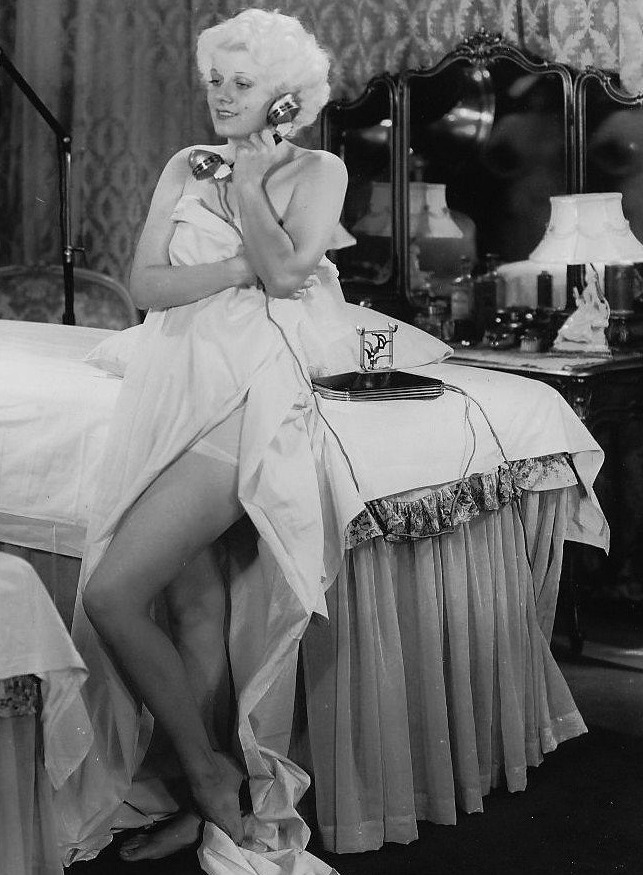



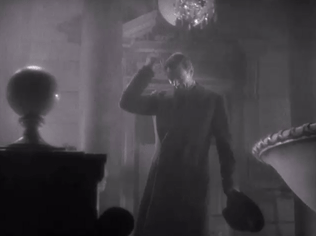


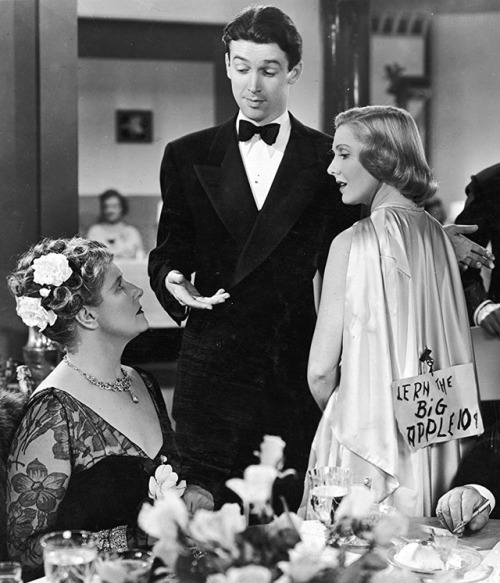
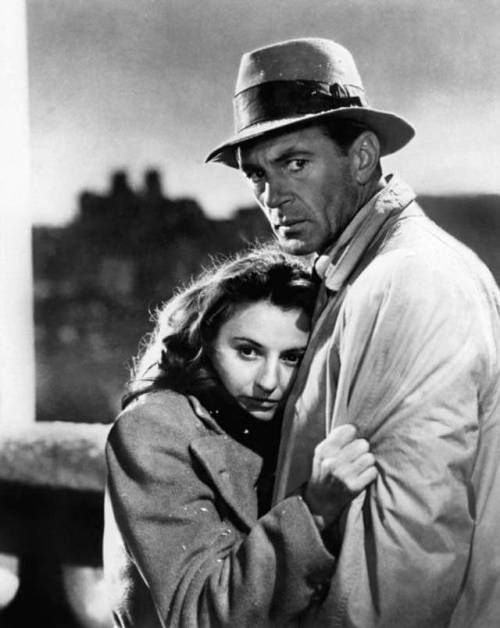



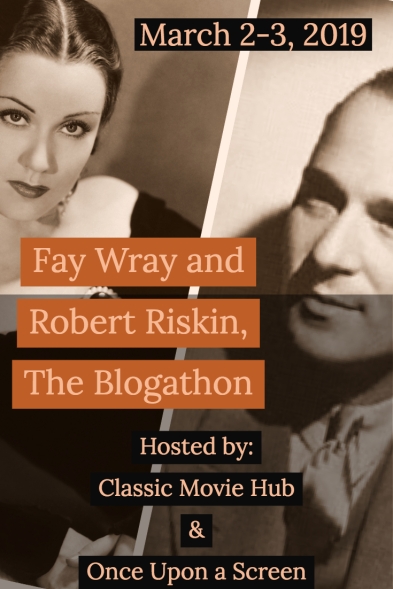
Thanks so much for entering the Blogathon! What a wonderful post. Loved the details, chronology, the book excerpts, and of course the gifs.
ReplyDeleteAnother fine article. A reminder of the collaborative art of filmmaking, and of my cherished films.
ReplyDeleteI love learning about these offscreen collaborations. It's rather sad that Capra didn't visit Riskin when he was sick or attend his funeral. Perhaps, he didn't consider Riskin as close of a friend as Riskin did him.
ReplyDelete